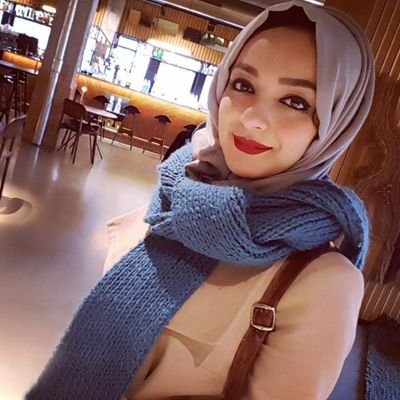British journalist and doctor Kate Adams bought a photograph of a Palestinian man standing in the ruins of his own home. Six years later, the photograph took her on a journey to the Occupied Palestinian Territories to find the man.
The photograph was taken by French war photographer Patrick Chauvel in the Jenin refugee camp in 2002.
“The photo is incredibly striking as you’re intrigued by this rubble,” Adams told MEMO, “but this wall with blue skies and palm trees and this man standing there.” It’s a captivating photo she said, but it was the story accompanying the photograph that drew Adams to it.
“The story with the photo said: I took this in 2002, and when I put down the camera, the man’s wife offered me a coffee.”
“It touched me,” Adams continued, “because this man and his family had lost everything, and yet they still offered a stranger a coffee.”
It was an incredible gesture of hospitality in view that their home had been obliterated.
Adams was very clear she wanted to bid and win this photograph, displayed at a fundraising auction at the Frontline Club in London in 2010. It has been on the wall of her surgery consulting room ever since.
![Kate Adams at her GP consulting room, London [Jehan Alfarra/Middle East Monitor]](https://i0.wp.com/www.middleeastmonitor.com/wp-content/uploads/2017/03/2017_3_8-Kate-Adams-at-her-GP-consulting-room-London11-Kate-Adams-at-her-GP-consulting-room-London.-Jehan-Alfarra-MEMO-1-.jpg?resize=920%2C613&ssl=1)
Kate Adams at her GP consulting room, London [Jehan Alfarra/Middle East Monitor]
Off to Jenin
Adams had not been to Palestine since 1993 and spoke no Arabic or Hebrew. With nothing but the photo in her hand, she set out for Jenin.
The only information I had in this photo that would help me find this man was actually the minaret from the mosque in the photograph.”
Adams flew to Tel Aviv’s Ben Gurion Airport, and from Jerusalem she headed to Ramallah, and then onto Nablus where she took the bus to Jenin.
“I arrived in Jenin about 11 O’clock in the morning,” she told MEMO, describing it as a “very hot, dusty, bustling city.” Adams encountered some Palestinian security officers, one of whom spoke English. As she showed him the photograph asking for directions, locals gathered and one of them recognised the mosque. “That looks like the Al-Ansar Mosque,” he told her.
“So before I knew it, I was in a taxi heading off to this mosque.”

Ibrahim Saleh’s daughter-in-law standing outside the shop, Jenin. [Kate Adams]
“Sure enough this woman came out. She looked at the photo. She had a big smile on her face and she said ‘that is Ibrahim Mahmoud Saleh; that is my father-in-law’,” Adams exclaimed, “and I couldn’t believe it.”
“About an hour after that, I was sitting in his house, drinking coffee with him and his family,” she continued.
I was experiencing their hospitality in their house and they were very welcoming and intrigued, I think, that a woman from London that they didn’t know had this photo on her wall that they had never seen and that I had come to find him.
![Kate Adams and Ibrahim Saleh at his home, Jenin. [Kate Adams]](https://i0.wp.com/www.middleeastmonitor.com/wp-content/uploads/2017/03/2017_3_8-Kate-Adams-and-Ibrahim-Saleh-at-his-home3-Kate-Adams-and-Ibrahim-Saleh-at-his-home-Jenin.-Kate-Adams-.jpg?resize=920%2C613&ssl=1)
Kate Adams and Ibrahim Saleh at his home, Jenin. [Kate Adams]
Ibrahim’s wife, Rasmieh, recounted what had happened to their house in 2002. As the battle of Jenin was underway in the camp, one day Rasmieh could see hundreds of Israeli tanks approaching. Ibrahim wanted to stay in the house regardless, but his wife, frightened, convinced him to take the children and go to her local village for a couple of weeks.
“I had always thought that their house had been bombed,” Adams said, “but actually, the Israeli Defence Forces had used armoured bulldozers and just smashed a path through houses.”
“There were lots and lots of houses that were destroyed in the camp, and this was their first day back,” she continued.
Strong Communities
Before heading out to Jenin, Adams imagined trying to find the man in the photograph would be extremely difficult.
“I think I was looking through a London lens,” she explained. “I’ve lived in my street in London for 14 years. I know my direct neighbours, but I wouldn’t recognise people in the street.”
“In these Palestinian towns and cities, however, there are large families and people do know each other. These are strong communities.” Adams related the many incidences she encountered after meeting with Ibrahim and his wife.
“The home that I was going to stay in…was actually Ibrahim’s daughter-in-law’s, the first person I had met who recognised the man in my photograph.”
Ibrahim has a large family. He has seven sons, one of whom had passed away, and he has dozens of grandchildren and great grandchildren. “They are a big strong family in the camp and a very close-knit family that that socialise together, do business together, and I think they have an olive grove that they work on together.”

Ibrahim Saleh and his wife, Rasmieh, at their home, Jenin. [Kate Adams]
They were so warm and hospitable to me, and they invited me back to their house for the post-wedding celebrations. I felt very honoured and privileged.

Ibrahim Saleh looking at Patrick Chauvel’s photograph of him, Jenin [Kate Adams]
“For a war photographer that has been covering wars since 1967 – he only has two photographs on his wall, and this is one of them.”








